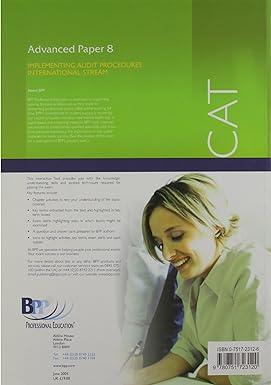
Exercise 4: Read the slate.com article by S.Landsburg: "One small step for man..." a. Landsburg never explicitly explains what he means by the "benefits of an extra step". explain it very briefly in your own words. Now lets re-think this problem, not as a cost-benefit trade-off problem, but as a cost minimization problem. We want to prove within reasonable assumptions that a person that wants to get, say, from the 1Nl floor to the 2nd floor of a building will rationally choose to walk up the stairs if no escalator was available but would choose to stand (or at lenst walk slower) on an escalator if there was one. First, assume that there is no escalator. The distance traveled by an individual depends on 2 important inputs: energy expended E and time used T. The following describes the different ways of achieving any given distance D : D=f(E,T)=2E1/2T1/2, where =4k[(1)+1]+49[(1)+1+1],= Last digit of your ID # . The cost of a unit of energy (say a calorie) depends on each individual. So, for example, an individual that likes burning calories would actually pay to be allowed to do it. For most people, however, exerting effort comes with a cost. Let's say that the cost is the same per calorie burnt. As for time spent going up the stairs, we can safely assume that it is not something we enjoy. The cost of spending time in the staircase is simply the opportunity cost of not doing something else (having fun, or working in exchange for money). b. Define the cost minimization problem for this individual, for a given distance it wants to travel (D), and given the per unit costs of using up energy wE and time wT. Graph the iso-quant for D=16 steps. c. Assume that wE=8[(1)+1+3] and wT=2. Add cost lines to your graph in part (b). Obtain the speed at which the individual ends up going up the stairs. Now assume that there is an escalator. This means that the distance traveled by this person will be increased by the constant-speed travelling escalator. That is, we must add to our previous function the distance traveled by the escalator (assume that it travels at constant speed " v "). d. Define the new distance function when there is an escalator. e. Define and solve the new cost minimization problem (as a function of escalator speed v ). Assume that v=3. Obtain the speed at which the individual ends up going up the escalator (net of the escalator speed). f. Show your results in a graph (with the relevant isoquant and iso-cost line). Exercise 4: Read the slate.com article by S.Landsburg: "One small step for man..." a. Landsburg never explicitly explains what he means by the "benefits of an extra step". explain it very briefly in your own words. Now lets re-think this problem, not as a cost-benefit trade-off problem, but as a cost minimization problem. We want to prove within reasonable assumptions that a person that wants to get, say, from the 1Nl floor to the 2nd floor of a building will rationally choose to walk up the stairs if no escalator was available but would choose to stand (or at lenst walk slower) on an escalator if there was one. First, assume that there is no escalator. The distance traveled by an individual depends on 2 important inputs: energy expended E and time used T. The following describes the different ways of achieving any given distance D : D=f(E,T)=2E1/2T1/2, where =4k[(1)+1]+49[(1)+1+1],= Last digit of your ID # . The cost of a unit of energy (say a calorie) depends on each individual. So, for example, an individual that likes burning calories would actually pay to be allowed to do it. For most people, however, exerting effort comes with a cost. Let's say that the cost is the same per calorie burnt. As for time spent going up the stairs, we can safely assume that it is not something we enjoy. The cost of spending time in the staircase is simply the opportunity cost of not doing something else (having fun, or working in exchange for money). b. Define the cost minimization problem for this individual, for a given distance it wants to travel (D), and given the per unit costs of using up energy wE and time wT. Graph the iso-quant for D=16 steps. c. Assume that wE=8[(1)+1+3] and wT=2. Add cost lines to your graph in part (b). Obtain the speed at which the individual ends up going up the stairs. Now assume that there is an escalator. This means that the distance traveled by this person will be increased by the constant-speed travelling escalator. That is, we must add to our previous function the distance traveled by the escalator (assume that it travels at constant speed " v "). d. Define the new distance function when there is an escalator. e. Define and solve the new cost minimization problem (as a function of escalator speed v ). Assume that v=3. Obtain the speed at which the individual ends up going up the escalator (net of the escalator speed). f. Show your results in a graph (with the relevant isoquant and iso-cost line)







